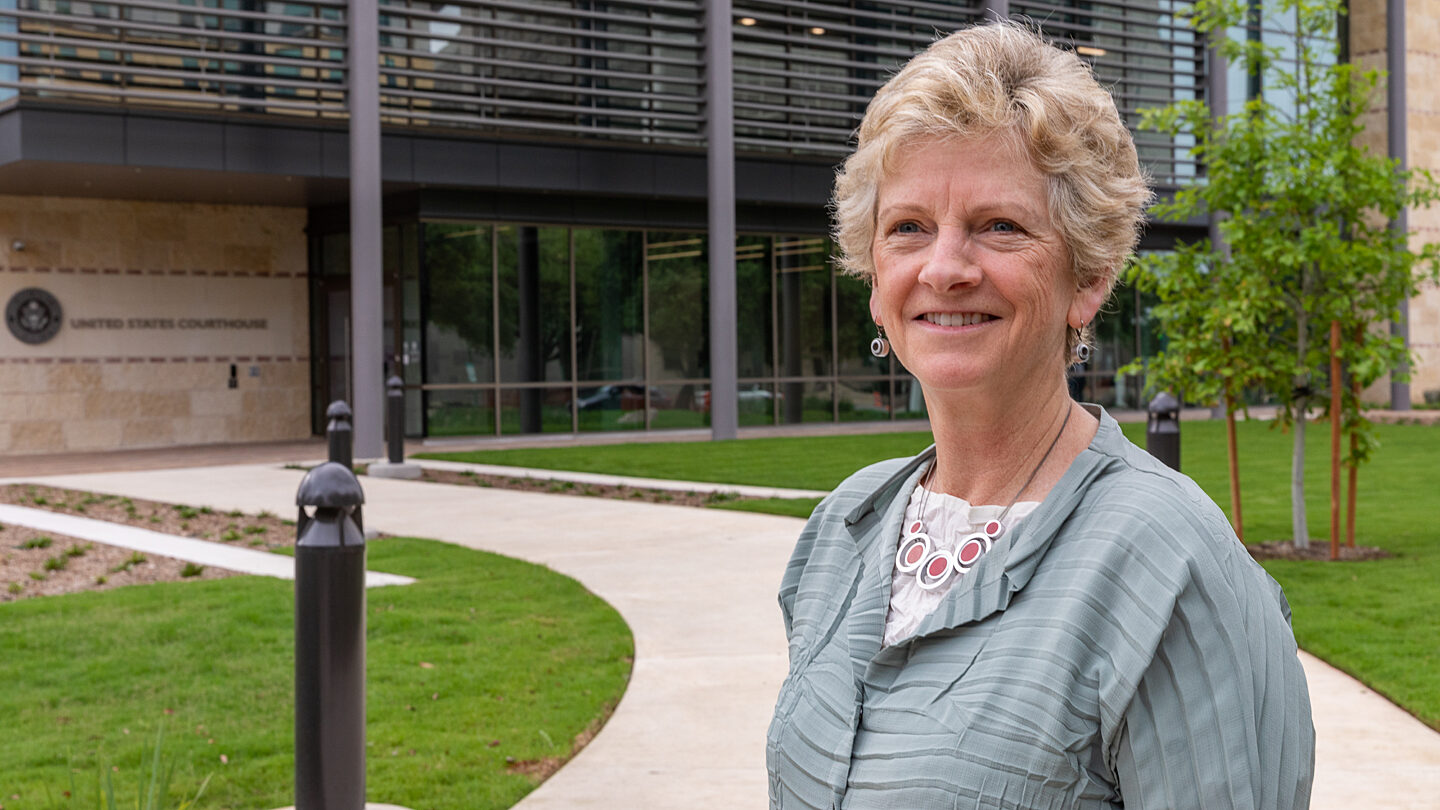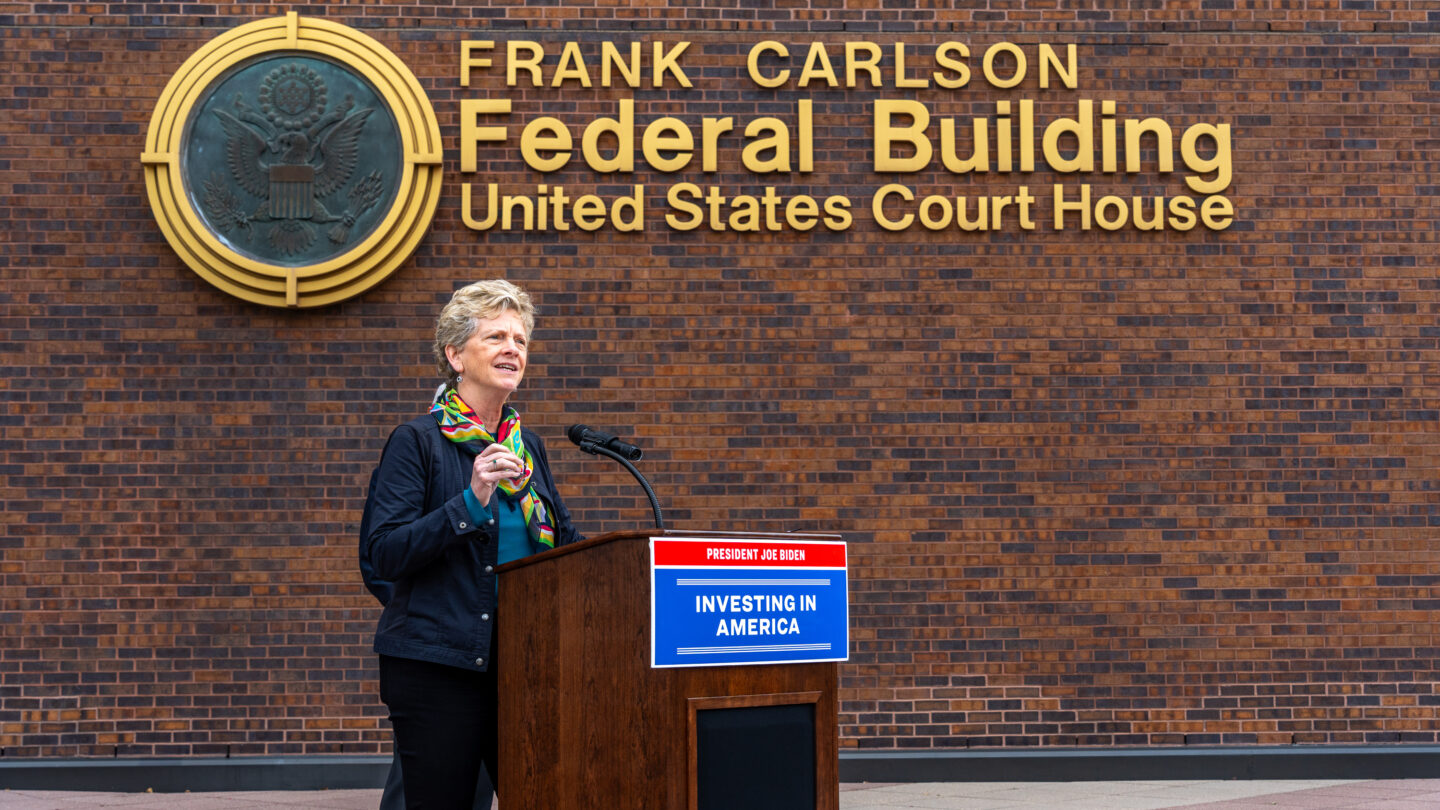“We have a real opportunity to move government into the digital age”
Robin Carnahan shares how to bring a human-centered design mindset across government agencies

From digitizing records to deep energy retrofits, Robin Carnahan’s career has focused around leading innovative projects that push impact in government forward. As Administrator of the U.S. General Services Administration (GSA), her work helps agencies across the federal government work more effectively through technology.
Prior to leading the GSA, Robin served as Secretary of State in Missouri, and founded and led state and local government efforts at 18F–a tech consultancy within the GSA. In 2017, she was named one of the federal government’s “Top Women in Tech.” She’s also worked as a fellow at Georgetown University’s Beeck Center, where she co-founded the State Software Collaborative.
We recently had the opportunity to sit down with Robin, who shared stories about the innovation happening in government today and how human-centered design is at the heart of it.
Tell us a bit about your journey. What inflection points in your career brought you to where you are today?
I can definitely recall a moment, a sort of wake up call for me. I was serving as the Secretary of State in Missouri. I remember the first day I walked into the office in 2005—a big focus at that time was business registrations. I remember seeing all these people with piles of mail on their desks. I was shocked to see how much of a manual process it was and I remember thinking, “Wow, we have a real opportunity to try to make government move into the digital age.”
Government is a service delivery business in a lot of ways. People turn to the government when they need something—you can make that as easy or hard for them as you want.
Even back in 2005, it was clear that technology was the way the world is going. I spent a lot of time on that in the Secretary of State’s office. And had many successes with it, like digitizing state records and archives, and making business license renewal easier and cheaper.
And what about public service—how did you get into this type of work?
My grandparents on my mother’s side both worked in Washington. My grandfather on my father’s side was a member of Congress. My father served as Governor of Missouri and my mother was the first female U.S. senator from Missouri. My brother’s in politics too. The whole notion of family and public service has never been unusual for me.
A specific story always comes to mind for me too. Growing up in southern Missouri, there was a swimming pool in a neighboring town that was really nice. The pool in our town was terrible—cracked concrete, chipping paint, the whole thing.
I asked my parents one day: “That town’s smaller than ours—why is their pool nicer?”
They told me a wealthy family donated money. I, of course, asked if we had any rich people in our town who could do the same. The answer was no—but there are other ways you can get things in your community. Not long after this conversation, there was an issue put on the ballot for people in my hometown to vote to update our swimming pool. I recruited all my friends and went door to door telling everybody about the need, and to get out and vote for it. Lo’ and behold, it passed.
That was a very early lesson for me on how you can do things if you just come together as a community, and it can make a difference for everybody. I was hooked on public service after that.
What do you love most about your job? Is there a story around it that comes to mind?
One of the most fun things that I get to do is going around the country and seeing the impact of the work we do.
I was recently in Oklahoma City, where we did a deep energy retrofit on a federal building. By improving things like the lighting systems, HVAC systems, and heat pumps, we were able to cut energy use of that building by 40 percent, straight up.
Then, we put solar panels on the roof and connected them to high capacity batteries that can power the facility for 3 hours. When the sun is shining, the building is fully powered by its solar panels. At night, the batteries kick in. We only have to purchase power at night, when it’s the cheapest possible.
We're also connected to the grid. So, at moments when the grid needs more capacity, we can tap into our batteries and free up capacity to support other communities in need."
This is the kind of really innovative stuff that's happening in government. We're able to lead by example, make investments in America that I see as triple wins: good for jobs and innovation, good for saving money for taxpayers, and good for the environment. To have that kind of impact is pretty great.

How do you make the case for human-centered design? What have you found helpful?
Demos not memos. What I mean is that, it’s really easy to spend a lot of time with words when what you really need is to see things through a user’s perspective.
An example that people talk about a lot is the Veterans Administration. They have a strong human-centered design mindset there, which was basically born out of one prominent user experience conversation. They recorded a veteran as they tried to apply for their veteran’s benefits—it was such a horrifyingly bad experience. That demo was shown to the Secretary and other leaders. It illuminated how much work needed to be done and helped bring about a shared commitment to figure out how to serve that veteran —and all veterans—better.
My lesson there is to always put users at the center of what’s trying to be achieved. Good results will come out of it.
If you could leave leaders with one piece of advice, what would it be?
Go and try to use your own website. It’s shocking how few people actually go do that. And how much it can inform your ability to make things better. Eighty-five percent of problems could be fixed with better design and better content design.
What are you most proud of?
I don’t think I can just pick one. And I don’t think the list of things to pick from is over for me just yet. But if I can leave any role having fully empowered teams to understand how things can be better—that might be my answer. Leaders come and go. At the end of the day, our work is about empowering teams, putting a strong culture in place, and putting people at the center of what we do.
GSA’s participation in this interview does not constitute endorsement of this organization or any other products, services, or enterprises discussed during this interview.


